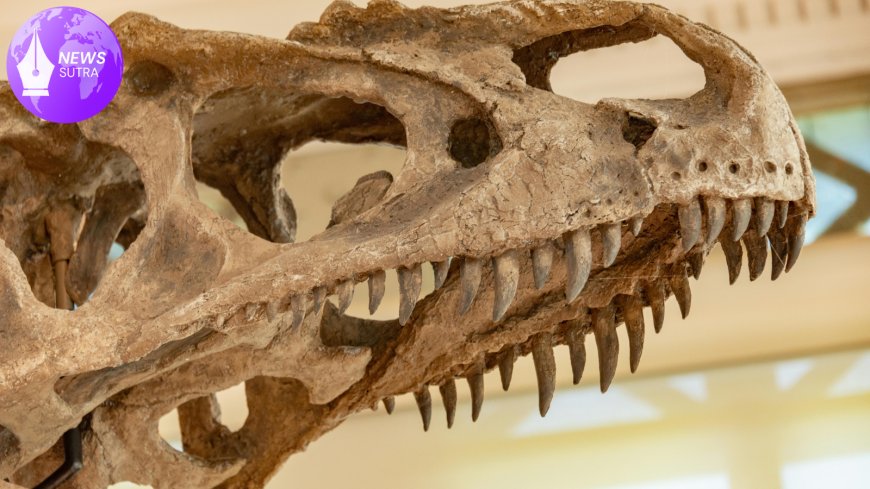Dinosaur Teeth Reveal Ancient Clues for Modern U.S. Climate Modeling
Scientists use dinosaur teeth as climate proxies to improve modern U.S. environmental modeling, integrating GIS and paleontological data for region-specific forecasts.

Ancient Teeth as Windows Into Past Climates
Paleontologists are turning to an unexpected source to inform modern climate science: dinosaur teeth. These fossils contain chemical signatures—such as oxygen isotope ratios and trace element distributions—that reflect the temperature and humidity of ancient ecosystems. By examining these signatures, scientists can reconstruct the climates in which dinosaurs lived, providing critical analogs for understanding long-term climate trends.
Dr. Julia Thompson, a paleoclimatologist at the University of Colorado, explained:
“Dinosaur teeth are natural archives. They preserve isotopic data that allows us to infer temperature fluctuations, rainfall patterns, and seasonal changes millions of years ago.”
GIS Integration for Region-Specific Insights
Modern researchers are combining Geographic Information Systems (GIS) with fossil data to map ancient climate proxies onto present-day U.S. regions. This approach allows climatologists to test whether historical patterns in precipitation, temperature, and vegetation can inform current models.
By overlaying fossil site locations with modern U.S. climate zones, scientists can:
-
Identify regions with climate histories that mirror projected future conditions.
-
Validate predictive climate models with independent geological data.
-
Improve risk assessments for agriculture, water resources, and wildfire management.
A recent study led by the Smithsonian Institution integrated over 3,000 dinosaur teeth samples with GIS layers, revealing that the Southeastern United States may face climate dynamics similar to subtropical periods from 66 million years ago.
Lessons for Modern Environmental Modeling
The chemical data from dinosaur teeth offer more than historical context—they provide a framework for improving predictive climate models. Some applications include:
-
Temperature Calibration: Oxygen isotopes in teeth help refine temperature reconstruction, enhancing the accuracy of future U.S. climate projections.
-
Hydrological Forecasting: Trace elements in enamel indicate seasonal rainfall, aiding long-term water resource planning.
-
Biodiversity Assessments: Fossilized feeding patterns can inform models of ecosystem resilience under changing climate conditions.
According to Dr. Thompson, these ancient proxies allow scientists to test “worst-case” scenarios over long temporal scales, offering a perspective beyond the limitations of modern instrumental records.
Case Study: Linking Ancient Data to U.S. Regional Forecasts
Using GIS overlays, researchers simulated how dinosaur-era climate fluctuations could relate to modern U.S. conditions:
-
Midwestern Plains: High variability in ancient rainfall patterns suggests regions may experience intensified seasonal swings, supporting predictions of extreme weather events.
-
Southwestern Deserts: Fossilized tooth data indicate past aridity, informing water scarcity projections under projected warming scenarios.
-
Southeast: Isotopic evidence points to warm, humid cycles that mirror some 21st-century climate models, providing analogs for heat and precipitation extremes.
These insights are being used to improve state-level climate adaptation strategies, from agriculture to wildfire management.
Expert Commentary and Policy Implications
Integrating paleontological proxies into environmental modeling has not gone unnoticed by policymakers. A senior analyst from the U.S. Environmental Protection Agency (EPA) noted:
“Historical climate records embedded in fossils offer a valuable independent dataset. When combined with GIS and modern instrumentation, they strengthen regional forecasts and support evidence-based decision-making.”
Experts emphasize that while dinosaur teeth cannot replace modern observational data, they provide long-term context crucial for understanding climate cycles spanning millions of years—a perspective often missing from short-term predictive models.
Bridging Science, Technology, and Public Awareness
Beyond research, public education programs are beginning to highlight how paleontology informs climate science. Museums and university outreach initiatives are showcasing interactive GIS maps that visualize ancient climates alongside projected regional changes, making the science accessible and actionable.
Such efforts reinforce a critical message: understanding Earth’s deep past is essential for preparing for its future. Dinosaur teeth, once silent relics of prehistory, are now guiding cutting-edge environmental modeling for the modern United States.
Conclusion
The study of dinosaur teeth as climate proxies represents a unique convergence of paleontology, GIS technology, and environmental science. By linking ancient data with modern U.S. climate modeling, researchers are improving the accuracy of region-specific forecasts, helping policymakers and communities plan for an uncertain future.
As these methodologies evolve, the lessons embedded in fossilized teeth may prove indispensable for anticipating the next century of climate challenges.














